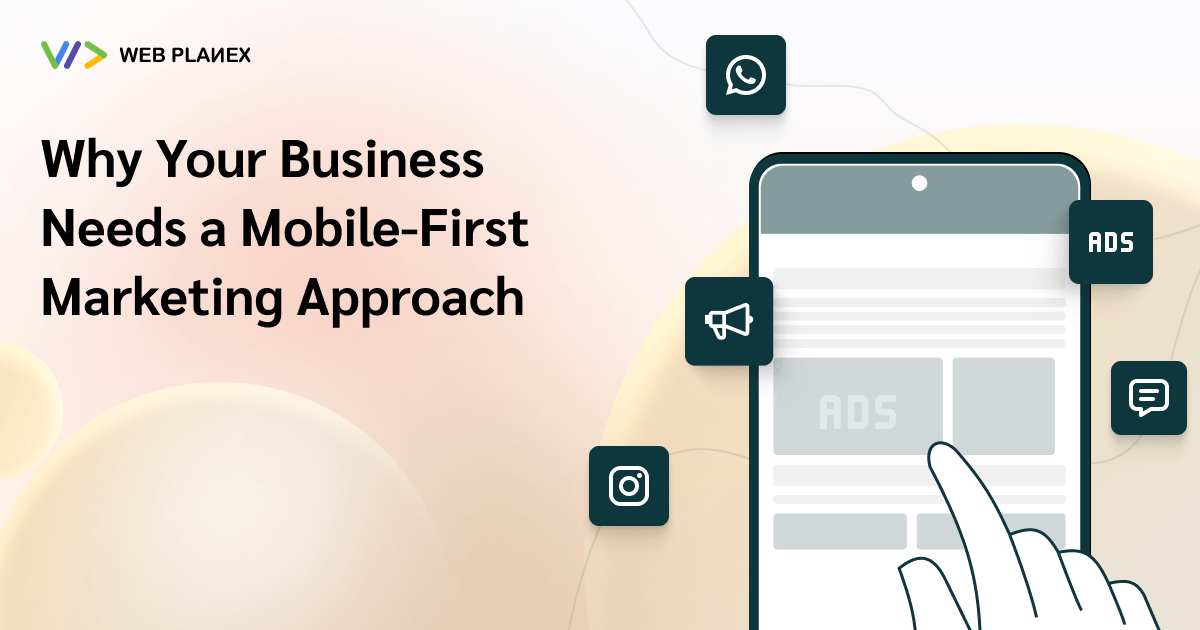
Chances are you’re reading this from a mobile phone. That alone is one of the reasons why your business needs a mobile-first marketing approach. In 2024, mobile phones accounted for 77% of global retail site traffic and an impressive 68% of successful online shopping transactions.
Smartphones have become such an integral part of the lives of many people. In fact, recent surveys reveal that half of the population can’t live without their phones. This is exactly why many business owners have ventured into what is now termed a ‘mobile-first marketing approach.’
If this is the first time you’ve heard of such a term, you’ll definitely find this article useful. Here, we are going to look into why your business needs a mobile-first marketing approach in 2025.
But What Exactly is a Mobile-First Marketing Approach?
From learning the newest innovations in tech at Cybernews to connecting with friends via Facebook, Instagram, and TikTok, and now, doing online shopping through platforms enabled by Shopify, WooCommerce, BigCommerce, and Magento, smartphones have transformed the way people live, work, and interact. That’s why many have adopted the mobile-first marketing strategy to enhance user experience.
To do this, web designers build your website for mobile platforms before bringing it out onto larger screens. Simply put, this is the opposite of the desktop-first strategy, where the business’s website is built first and then the non-compatible elements are taken down to make the mobile version.
With a mobile-first marketing approach, the content, advertisements, and the website itself are optimized already for mobile platforms. This strategy capitalizes on the overall user experience—from speed, functionality, and personalization. Obviously, this results in better user engagement and boost conversion rates.
Why Does Your Business Need a Mobile-First Marketing Approach?
As the number of mobile users continues to grow this 2025, the need for a mobile-first marketing approach for your business becomes more evident. Apart from a seamless user-experience, here are the other benefits that this approach can bring to your business:
- Better SEO Performance. Obviously, as people move towards the use of smartphones, so does Google’s approach to indexing and ranking sites. With such mobile-first indexing practices, businesses that are not optimizing their mobile interface may rank lower in search results and decrease online visibility and traffic, thereby losing out on potential customers.
- Boost Conversation Rates and Sales. By implementing easy-to-navigate mobile designs, improving page load speeds, and simplifying the payment and checkout process, mobile-optimized websites are noted to achieve higher conversion rates than those that are not. Through embracing mobile-first design, potential customers are more likely to complete their purchase, sign up for your offerings, or respond to the business’ call to action.
- Faster Load Speed. Nothing is more frustrating than dealing with a website that takes a lot of time to load. Slow load times have resulted in 57% of visitors leaving the page and approximately 80% of them not returning to the site anymore. Of course, you wouldn’t want that happening to your eCommerce store, right? With optimized mobile website design, streamlined operating systems, and a focus on fast mobile processors, a mobile-first marketing approach offers more efficient loading times for your business page—leading to customer retention and higher conversion rates.
- Cost-Effective. Redesigning your eCommerce website not only takes time and effort. It requires a significant amount of money. With a mobile-first marketing approach, mobile constraints are already addressed from the start, eliminating the need for costly redesigns down the line. By ensuring that the content and functionality are already optimized for mobile devices, business resources can be more effectively allocated to marketing, product development, and customer service.
- Build Stronger Client Relationships. Anchored on convenience and mobility brought about by mobile phones, businesses can further reach customers by building stronger relationships with them. Incorporating social media strategies and chatbots can effectively enhance communication and interaction with the target audience—resulting in a more intuitive user-experience, smoother business transactions, and long-term relationships with clients.
- Valuable Data and Insights. By making the most of recent technologies, such as geolocation and behavior tracking, businesses can utilize valuable data and insights gathered to deliver personalized content and offers to customers. Using a mobile-first marketing approach can help improve localized targeting by making the user experience better suited to them—such as making culturally appropriate messages and incorporating regional trends.
Essentially, because of the sensitive nature of this data, data encryption protecting information on mobile devices and connected endpoints must be strictly implemented. Likewise, choosing web and mobile designers with a proven track record, like Webplanex, and reading unbiased reviews, such as those conducted by the Cybernews research team for Express VPN review, can help you make informed decisions and protect your eCommerce data from the preying intentions of cyberhackers.
What are the Best Practices for the Mobile-First Marketing Approach?
Reaching this part could only mean one thing: you are now considering going for a mobile-first approach. Great!
To further nourish what you’ve learned so far, here are some tips to ensure that you get the most out of this approach:
- Make sure to prioritize page content. Eliminate unnecessary elements and focus on what your customers need to know about your business.
- Keep it simple and functional. Utilize intuitive navigation drawers and make the most of every space available.
- Avoid disruptive pop-ups. Of course, the last thing you want is to annoy your customers and drive them away from your page.
- Test speed before launching. As an integral part of the design process, make sure to implement numerous speed tests. Utilize analytics to assess the elements that need improvement and don’t hesitate to collect feedback from different sources.
- Make the call to action friendly and inviting. Words and visuals can literally make magic. Carefully choose the words and designs that you use to make impactful CTAs.
Conclusion
Keeping up with the customers’ needs is an indispensable aspect of business. As smartphones become an essential companion for life among many individuals, utilizing a mobile-first marketing approach for your business allows you to tap into such a big market.
This 2025, allow your business to reach more audiences, strengthen relationships with loyal customers, and, of course, make more sales.




